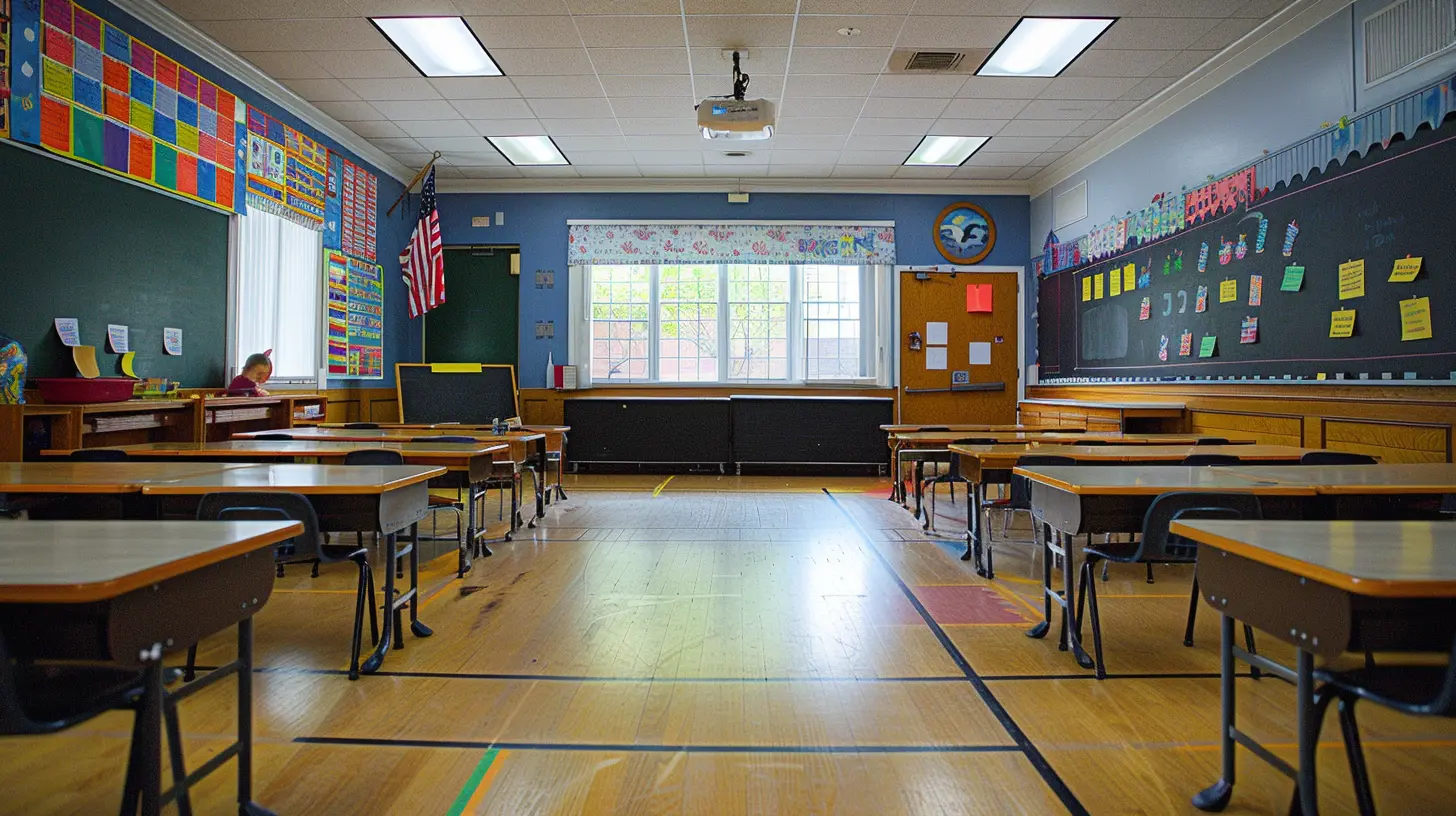Co-Teaching Models in Inclusive Classrooms: What Works Best?
16 October 2025
Inclusive education has transformed how students with diverse abilities learn in the same classroom. But let’s be honest—managing different learning needs can be a real challenge! That’s where co-teaching comes in. It allows educators to work together, blending their expertise to support every student.
But what are the best co-teaching models? How can teachers team up effectively? Let’s break it down and explore the co-teaching strategies that actually work in inclusive classrooms.

What Is Co-Teaching?
Co-teaching happens when two teachers (typically a general education teacher and a special education teacher) work together to instruct a group of students. Instead of pulling kids out for specialized instruction, co-teaching keeps them in the general education setting while still providing the extra support they need.This model is a win-win. General education teachers contribute subject knowledge and classroom management skills, while special education teachers bring expertise in accommodating and modifying content for diverse learners.
But here’s the catch: Co-teaching isn’t just about putting two teachers in the same room. It requires careful planning, communication, and trust.

The 6 Most Effective Co-Teaching Models
There isn’t a one-size-fits-all approach to co-teaching. Depending on student needs, teaching styles, and available resources, different models may work better in different situations. Here are six tried-and-true co-teaching models:1. One Teach, One Observe
In this model, one teacher leads instruction while the other observes, gathering data on student engagement, understanding, and behavior. This data helps adjust teaching strategies and interventions.- Best for: Identifying learning gaps, assessing student progress, and addressing specific behavioral needs.
- Potential drawback: The observing teacher may feel disconnected if not actively participating.
2. One Teach, One Assist
Here, one teacher takes charge of the lesson while the other moves around the room, assisting students who need extra help.- Best for: Immediate student support without disrupting the lesson.
- Potential drawback: Can unintentionally reinforce a "lead teacher vs. assistant" dynamic if not balanced well.
3. Parallel Teaching
In this setup, the class is split into two equal groups, with each teacher instructing half the students simultaneously. This allows for smaller group instruction and more personalized learning.- Best for: Addressing different learning styles and creating a more interactive environment.
- Potential drawback: Requires strong planning to ensure both groups receive the same essential instruction.
4. Station Teaching
Students rotate between different stations, each led by a teacher or focusing on an independent learning activity. Both teachers actively instruct at different points.- Best for: Hands-on and interactive learning, subject areas that benefit from multiple activities.
- Potential drawback: Requires strong classroom management to keep students engaged during transitions.
5. Alternative Teaching (Small-Group Instruction)
One teacher works with a small group of students needing extra support, while the other provides instruction to the rest of the class.- Best for: Remediating skills, providing targeted interventions, and challenging advanced students.
- Potential drawback: If not used carefully, some students might feel singled out.
6. Team Teaching (Tag-Team Teaching)
Both teachers share instruction equally, bouncing ideas off each other and engaging in a dynamic, collaborative lesson. Think of it as co-hosting a talk show where both voices carry equal weight.- Best for: A seamless, engaging teaching experience that fosters teamwork and models collaboration for students.
- Potential drawback: Requires strong communication and planning to ensure lessons don’t become disorganized.

Which Co-Teaching Model Works Best?
Here’s the truth: There’s no universal "best" model. The right fit depends on factors like class size, student needs, teaching styles, and subject matter.However, research suggests that parallel teaching, station teaching, and team teaching tend to be the most effective for inclusive classrooms. Why? Because they provide greater student engagement, more individualized instruction, and active participation from both teachers.
That said, flexibility is key! Teachers often use a mix of models depending on the lesson or student needs. What works one day might need tweaking the next.

Tips for Making Co-Teaching Work
Co-teaching sounds great in theory, but it only succeeds with collaboration, planning, and mutual respect. Here are some tips to ensure a smooth co-teaching experience:1. Build Strong Communication
Open and honest communication between co-teachers is crucial. Regular planning meetings help align goals and strategies.2. Define Roles Clearly
Avoid stepping on each other’s toes by clarifying who does what in the classroom. Whether it’s leading instruction, managing behavior, or adapting materials, both teachers should know their roles.3. Play to Each Other’s Strengths
Maximize your talents! If one teacher is amazing at interactive lessons while the other excels at structured instruction, divide responsibilities accordingly.4. Be Flexible
Some days things won’t go as planned, and that’s okay. Adapt and adjust when needed.5. Maintain a Growth Mindset
Great co-teaching doesn’t happen overnight. Be patient, reflect on what’s working, and keep improving.The Impact of Effective Co-Teaching
When done right, co-teaching transforms classrooms. It fosters an inclusive environment where all students—regardless of ability—receive the support they need without feeling singled out.Students benefit from more individualized attention, diverse teaching styles, and increased engagement. Plus, co-teaching helps both educators grow professionally, learning from each other and refining their instructional techniques.
Final Thoughts
Co-teaching isn’t just about sharing a classroom—it’s about sharing responsibility, strategies, and a passion for student success. Different models work in different situations, but the key to success lies in teamwork, communication, and a flexible mindset.If you’re an educator stepping into co-teaching, remember this: It’s not about who’s leading the lesson—it’s about how both teachers work together to create an inclusive, engaging learning experience.
So, which co-teaching model speaks to you? Try different approaches, see what clicks, and create a classroom where every student can thrive!
all images in this post were generated using AI tools
Category:
Special EducationAuthor:

Anita Harmon
Discussion
rate this article
1 comments
Maren McTigue
This article effectively explores co-teaching models, highlighting their potential to enhance student engagement and learning outcomes. A deeper analysis of specific case studies could enrich understanding of the most effective strategies in diverse classroom settings.
October 24, 2025 at 11:33 AM

Anita Harmon
Thank you for your insightful feedback! I appreciate your suggestion for deeper analysis of case studies and will consider this for future work to enhance understanding of effective strategies in co-teaching.


